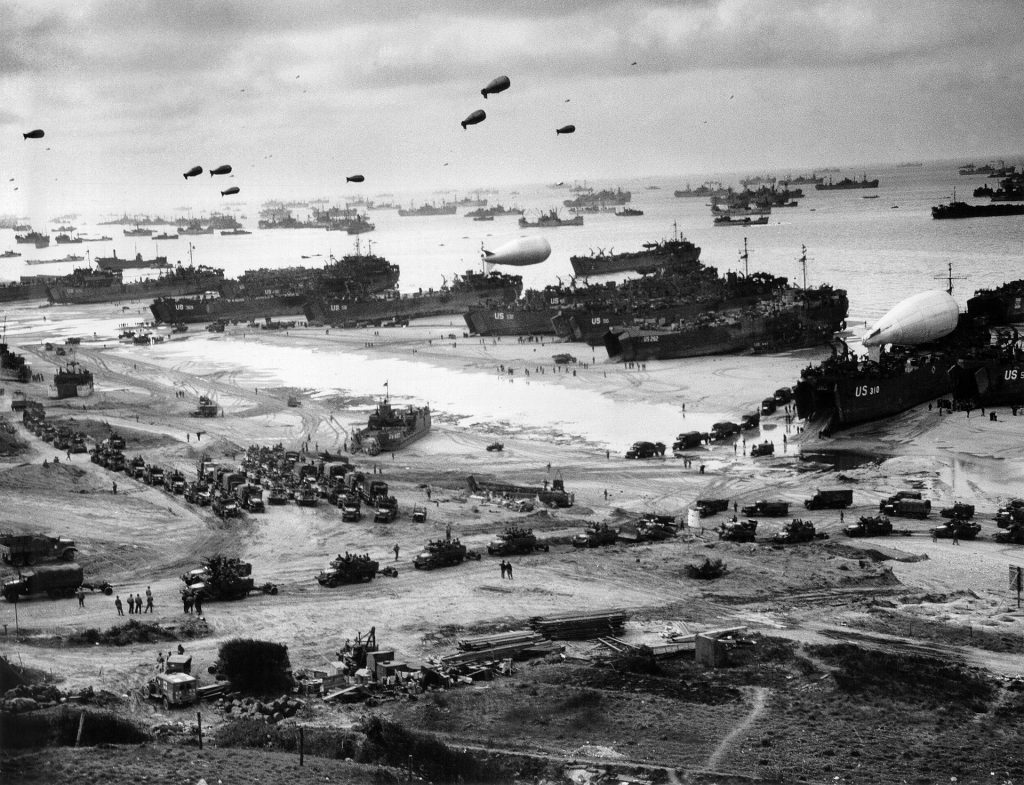On 5th and 6th June 2019, the world remembered the many thousands of men – living and dead – who took part in the crucial D-Day landings as part of Allied World War Two plan “Operation Overlord”.
The largest combined land, air and sea operation in history, the D-Day landings marked a turning point in the war as 160,000 Allied troops crossed the English Channel and arrived on the beaches of Normandy in France.
For many years, historians believed that a ‘late-rising moon’ had aided the efforts of the Allied troops, providing paratroopers and soldiers on gliders with the cover of darkness as they arrived and the light of a full moon when they searched for their targets.
However, Professor Donald Olson from Texas State University has revealed that this story is nothing more than a myth. However, Professor Olson has revealed why the moon did still play a large part in the events that took place during that vital 24-hour period.

According to Professor Olson, who has consulted tidal records during the week when the landings took place, the moon was still a significant factor but not in the way historians had previously believed. In fact, he discovered that the moon was actually an early rising moon, meaning it rose before sunset and remained in the sky all night, not setting until after sunrise.
Olson added that the moon would have reached its highest point in the sky at 1:19 am, near the time of the British Pegasus Bridge assault, and just as the American airborne operations began. However, contrary to popular belief, it was actually this light that prompted military planners to schedule the landings for these specific dates and subsequently provided the Allies with the upper hand.
According to a report written by NASA’s Asam Voilad, Allied Supreme Commander Dwight Eisenhower had set the early morning of 5th June as the date for the invasion as a direct result of the moon’s schedule.
He said: ‘It was one of just three days in June 1944 when the Moon would be bright enough for paratroopers and pilots to operate effectively and the tides would be low enough for the first landing parties to clear mines, barbed wire, and other defences on the beaches.’
According to Olson, the full moon was also crucial in terms of tides as the Allies wanted low water so they could destroy any beach obstacles set up by the Germans. However, they also needed rising water to ensure that they did not get stranded. “If they landed on a falling tide, the landing craft would be stuck there for as much as the 12 hours,” Olson added. “That’s an important part of the D-Day plan — rising water, just after low tide.”
Sadly this latter prediction didn’t quite go to plan. While the moon was on their side, the Allies hadn’t prepared themselves for the tidal surges that plagued the area surrounding Normandy. While the Allied soldiers were able to use a low tide to arrive at 5:23 am on D-Day as planned, and even to destroy the Germans’ underwater defences, only five gaps were made in the defences out of a planned 16. The fast-rising tides of Omaha Beach – increasing a foot every ten minutes – meant that it was impossible for the troops to carry out their plans and just one hour later the tides had pushed the Allies up the beach. The remaining loss of life-related to the underwater defences that remained earned the beach its infamous nickname of “Bloody Omaha”.
